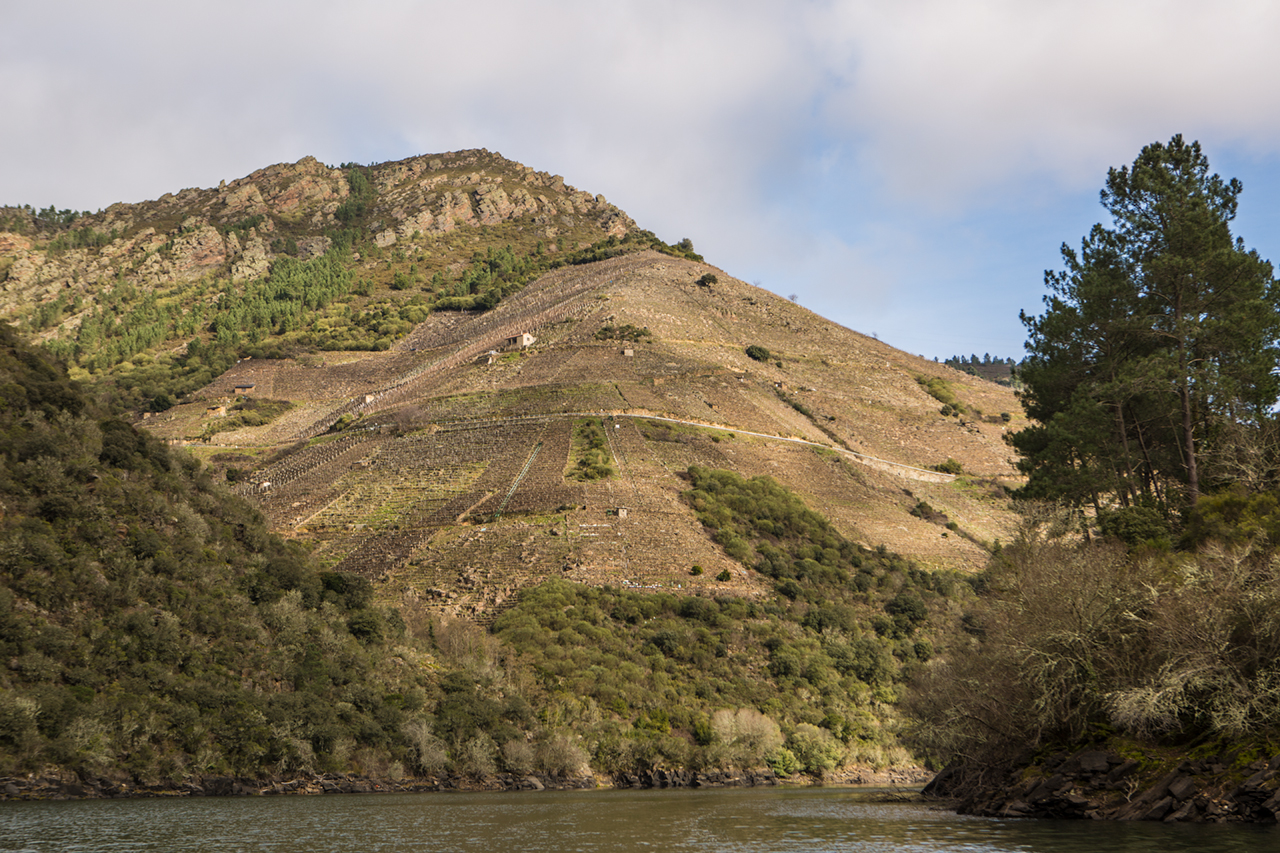

There are few viticultural regions as dramatic, wild, and diverse as Ribeira Sacra. Just seeing the steep, nearly vertical slopes […]
Keep ReadingThere are few viticultural regions as dramatic, wild, and diverse as Ribeira Sacra. Just seeing the steep, nearly vertical slopes and the centuries-old terrace walls rise above you and dizzyingly below you, you cannot help but feel that there are great wines in the very DNA of this landscape. Ribeira Sacra is currently one of the most talked-about places in the wine world, not only for its scenery but for exciting, refreshing, and complex wines made from indigenous varieties like Mencia, Mouranton, Bastardo (a.k.a. Trousseau), Grao Negro, Sousón, Godello, Doña Blanca, Palomino and many other heirloom varieties.
Dominated by a network of canyons carved by the Miño and Sil, Ribeira Sacra is a wild and beautiful place to make wine. Fortunately, many of these tortuously steep hillsides had been terraced by the engineering-mad Romans. It may have been hard work to farm these slopes – in fact, it still is – but agriculture and, more importantly, viticulture thrives in this area. As a boundary between the cool, rainy Atlantic coast and Spain’s hot, dry interior, Ribeira Sacra is temperate with a relatively long growing season. The main threat to viticulture is the storms that blow in from the Atlantic, bringing plenty of rain and wind.
But the terroir of Ribeira Sacra is not as ancient as you might think. What little flat land that may have once existed here was submerged with the damming of the Sil and Miño well over 50 years ago. During that time, Spain was also experiencing a mass migration from rural areas into cities. In Ribeira Sacra, only the warmest and driest vineyards remained cultivated – those with southern and western exposures. However, as the valleys became lakes, the microclimate gradually changed. Morning fogs became more common, nighttime temperatures increased, and the amount of light reflecting off the water made the formerly “best” spots just a little too warm for the region’s indigenous varieties. As a result, in the last decade, several young growers started looking to those long abandoned, unrecognized, and under-appreciated sites: north- or east-facing, randomly planted, challenging to farm, and difficult to reach.
Fedellos was founded in 2011 when Curro Barreño and Jesús Olivares partnered left Rosel do Sil to strike out on their own. Both began their careers in the Sierra de Gredos, and they remain close friends with Dani Landi, Fernando Garcia, and Marc Isart. This association is evident in their wines: elegant and nuanced but persistent and endlessly layered and complex.
Originally focused on the vineyards of the Val do Sil and Val do Bibei within the boundaries of DO Ribeira Sacra, as they sought out additional vineyard sites, they came to recognize that the viticultural heritage of the Val do Bibei wasn’t constrained by boundaries of the DO. Val do Bibei is a remote part of Galicia which forms the boundary between Valdeorras and Ribeira Sacra. It is a narrow, forrested, and steep valley that is a reminder of what this region was like before many mountain streams were damed. Because this subzone of Ribeira Sacra was largely abandoned and overlooked, Jesús and Curro began to acquire vineyards here and shifted their attention away from the Val do Sil to the Val do Bibei. From this starting point they journeyed outside the boundaries of the DO following the Bibei into the mountains.
Leaving the DOs of Ribeira Sacra and Valdeorras and heading south into the uplands scattered vineyards they found steep terraced hillsides surrounded by hardwoods and pines. These are ancient sites were carved into the remote hillsides centuries ago and had now been nearly abandoned. Many enologists would view these vineyards as a nightmare – a diverse array of mixed varieties, side-by-side, white and red. Conventional thinking would find these sites suitable for only making rustic peasant wines but certainly not fines wine. But Jesús and Curro have proven conventional thinking wrong time and again. With proper care, these wines outside the cannot be understood as anything other than minutely rendered snapshots of terruño just as profound as the wines they were making within the DO.
Initially these wines were bottled seperately under the name Peixes but once they left the DO Ribeira Sacra due to their wines being deemed atypical, it only made sense to merged Peixes into Fedellos. They have also settled in Seadur where they have their ancient stone-cut cellar. Yes it is in Valdeorras but really when it comes to coloring brilliantly outside the lines, no one quite compares to Jesús & Curro. The winemaking at Fedellos remains minimalist: all focus is placed on site expression beginging with harvesting by hand, spontaneous co-fermentations, long, gentle macerations in concrete, aging in neutral French oak barrels, foudres and concrete tanks. Having worked with them from the start after an introduction by Dani Landi seen their project grow, and witnessing their dedication to site-specific expression and minimalist winemaking makes their wines some of the most revealing and exciting in our portfolio.
CloseView of Cortezada from the Ribera do Sil
Curro and Jesús

